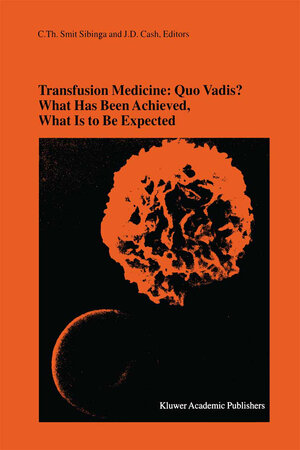
×
![Buchcover ISBN 9781402000799]()
Transfusion Medicine: Quo Vadis? What Has Been Achieved, What Is to Be Expected
Proceedings of the jubilee Twenty-Fifth International Symposium on Blood Transfusion, Groningen, 2000, Organized by the Sanquin Division Blood Bank Noord Nederland
herausgegeben von C.Th. Smit Sibinga und J.D. Cashth It is a great pleasure for me to open the jubilee 25 International Symposium on Blood Transfusion here in Groningen. This symposium is co-sponsored by the World Health Organization and is being held under the auspices of the ISBT and the Secretary General of the Council of Europe, Mr Walter Schwimmer. The patronage was granted with great pleasure for several reasons. First of all, Dutch experts are very active in our Committees and have largely contributed in developing the Council of Europe principles in the blood area. Secondly, the Council of Europe is active today in the area of blood transfusion due to a tragic event, which occurred in 1953 in the Netherlands; following a flooding many of the blood products given for assistance' could not be used due to incompatibilities and differences in labelling. Some words to present the Council of Europe since the organisation is sometimes confused with institutions ofthe European Union: The organisation has been founded in 1949 to establish the principles of democracy and rule of law all over Europe. Since 1989, the year of the fall of the Berlin wall and the opening up of the iron curtain, these principles could be extended to the countries of Central and Eastern Europe. Today this makes the Council of Europe the only pan-European organisation with 41 Member States thus representing more than 750 million people.



